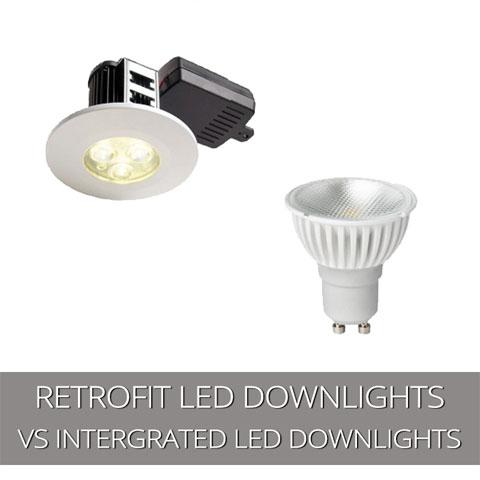Integrated LED Downlights vs Retrofit LED Downlights
With the advancement of LED technology in lighting fixtures, there are currently two types of LED downlight available on the market; Integrated and Retrofit LED downlights. This blog post aims to explore the pros and cons of each.
What Are Downlights?
As you know, lighting is required in your home but it is often hard to find lights that provide both an aesthetic style and clinical function to your rooms. Many would argue that downlights, which are a type of light that are recessed into the ceiling and emit their light downwards in a narrow beam, provide both the aesthetic and function for your lighting.
When the light is turned on, a downlight gives the appearance as if the light is shining bright downwards from the ceiling, with the light beam of the downlight providing a more consummate, vibrant and positive lighting effect to areas or objects below them. Downlights are also very versatile in relation to the type and amount of light they deliver, for instance they are perfect for using as task lights where a lot of bright light is needed as well as being ideal for ambient lighting when certain objects need highlighting in a room. Downlights can be fitted anywhere in your home but are most commonly found in kitchens, bathrooms and living areas.
The most popular form of downlights are halogen downlights, which although provide a powerful lightoutput, are incredibly inefficient with regard to their longevity and energy usage. A more modern and sustainable type of downlight is the LED Downlight, with two types available for you to buy on the market today. The two types are Integrated LED downlights and Retrofit LED downlights.
Integrated Or Retrofit?
Integrated LED downlights are intended to give the best possible and stress free lighting experience to the user. The idea is that once the downlight is installed, there will be no need to replace the light again in your lifetime. The biggest pro of an integrated downlight is that it has a considerable longer life expectancy compared to a retrofit type, however the biggest con is that the LED is none replaceable. This means that you may need to replace the entire fitting should there be a fault with your light fixture.
The heat sink of the integrated LED light is much bigger permitting the use of high power of LEDs than a retrofit LED downlight as the power output of these lights are limited since it can only have a moderately small heat sink. This means the beam of an integrated type can be spread much wider, which means no hot spotting but just pleasant and smooth light spread across a room.
The fact that an integrated downlight light has far more spread throughout your room results in fewer downlights needing to be installed, resulting in less of an initial outlay needed when purchasing your downlights.
The greater power of an integrated fit means only fewer lights are needed to reduce the cost. The retrofit LED lights are energy saving lights that provide an enhanced light quality and also results in less heat decreasing high voltage alternating current. The retrofit LED downlights also give a better prolonged existence of lamp life.


